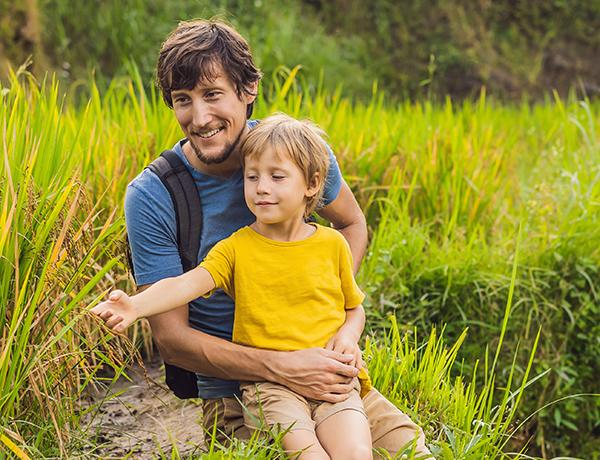
Where You Live Affects How You Live
Our health is our everything. It is what keeps us living, breathing, and interacting with the people around us. While it can ebb and flow based on what’s happening in our lives (perhaps a broken bone, stress from work, or even a worldwide pandemic), it should be our top priority. However, we live in a modern society and we are BUSY. We overextend ourselves on a daily basis and trying to find that time to focus on ourselves and our health (be it physical, mental, or emotional) becomes ever the more difficult.
There is a light, however. Numerous studies have shown that the landscape and opportunities within a 5-10 mile radius of our homes can increasingly help when it comes to finding that extra time and chance to prioritize our health. Through this knowledge, we’re realizing now more than ever that the community in which we live has a profound impact on our health and wellbeing. According to the Global Wellness Institute’s 2018 Build Well to Live Well Report, “Our homes, communities, and surrounding environments directly affect our daily behaviors and lifestyles, and together these determine up to 80-90 percent of our health outcomes.”
Impact of Nature
Currently, it is estimated that humans spend 90 percent of their time indoors. Unfortunately, a lack of exposure to nature can actually be harmful to people while spending time in nature has been proven to alleviate stress and anxiety.5,6,7 Moreover, views of nature have even been shown to speed up the healing of patients in hospitals.8 Living in a community that not only provides access to nature and flexible outdoor spaces but also encourages outdoor activities can be very impactful on our mental health as a whole.
Social Interactions
Equally as important as spending time outdoors is spending time with other people. In fact, a sense of belonging is #3 on Maslow’s Hierarchy of Needs. Humans are social creatures, and it's important for us to have strong, healthy relationships with others. People with supportive friends and family generally have better mental and physical health than those without.9 Mental health improves for people who take part in churches, clubs, and volunteer programs. A beneficial community will offer its residents these types of social opportunities.
Safety
Beyond just the benefits from social interaction, knowing our neighbors is important to our wellbeing, as well. Tight-knit communities promote feelings of safety. Safety is the #2 tier on Maslow’s Hierarchy of Needs and is classified as a ‘basic’ need for psychological welfare. Living somewhere we feel safe lowers our stress levels and risk of stress-related disorders.
Summary
Overall, these examples along with many others prove how our individual health and the health of our families are greatly influenced by the communities in which we choose to live. These communities can provide and encourage certain opportunities that affect our day-to-day choices, and these daily lifestyle choices have a much greater impact on our health than we may realize.
At Jubilee, we’re designing a community with wellness as our first priority. Our care for the physical, mental, and emotional health of our residents is what drives our decisions as we create a joyful neighborhood in which you and your family may thrive.
Explore Jubilee for a wellness-focused living experience
1. Goodman, A., S. Sahlqvist, and D. Ogilvie. 2014. “New Walking and Cycling Routes and Increased Physical Activity:One- and 2-Year Findings from the UK iConnect Study.” American Journal of Public Health 104 (9): e38–e46. doi: 10.2105/ AJPH.2014.302059.
2. Rodriguez, D. A. 2009. “Active Transportation: Making the Link from Transportation to Physical Activity and Obesity.” Active Living Research, Research Briefs, San Diego State University, San Diego, CA, Summer.
3. Han, B., D. Cohen, and T. L. McKenzie. 2013. “Quantifying the Contribution of Neighborhood Parks to Physical Activity.” Preventive Medicine 57 (5):483–87. doi: 10.1016/j. ypmed.2013.06.021.
4. Harnik, P., and B. Welle. 2009. Measuring the Economic Value of a City Park System. Washington, DC: The Trust for Public Land.
5. Green Cities: Good Health. 2010–2014. “Mental Health & Function.” University of Washington, College of the Environment, Urban Forestry/Urban Greening Research. Last modified September 11. 2014. (Accessed July 20, 2014.) https://depts.washington.edu/hhwb/Thm_Mental.html. 82 B U I L D I N G H E A L T H Y P L A C E S T O O L K I T
6. Maas, J., R. A. Verheij, S. de Vries, P. Spreeuwenberg, F. Schellevis, and P. P. Groenewegen. 2009. “Morbidity Is Related to a Green Living Environment.” Journal of Epidemiology and Community Health 63 (12): 967–73. doi: 10.1136/jech.2008.079038.
7. American Society of Landscape Architects. 2014. “Health Benefits of Nature.” Professional Practice. (Accessed August 3, 2014.) http://www.asla.org/healthbenefitsofnature.aspx.
8. Ulrich, R. S. 1984. “View through a Window May Influence Recovery from Surgery.” Science 224: 420–22.
9. University of Rochester Medical Center. 2014. “Older Adults and the Importance of Social Interaction.” In Health Encyclopedia. Last updated November 22, 2014. http://www.urmc.rochester.edu/encyclopedia/content.aspx?contentTypeID=1&ContentID=4513.



